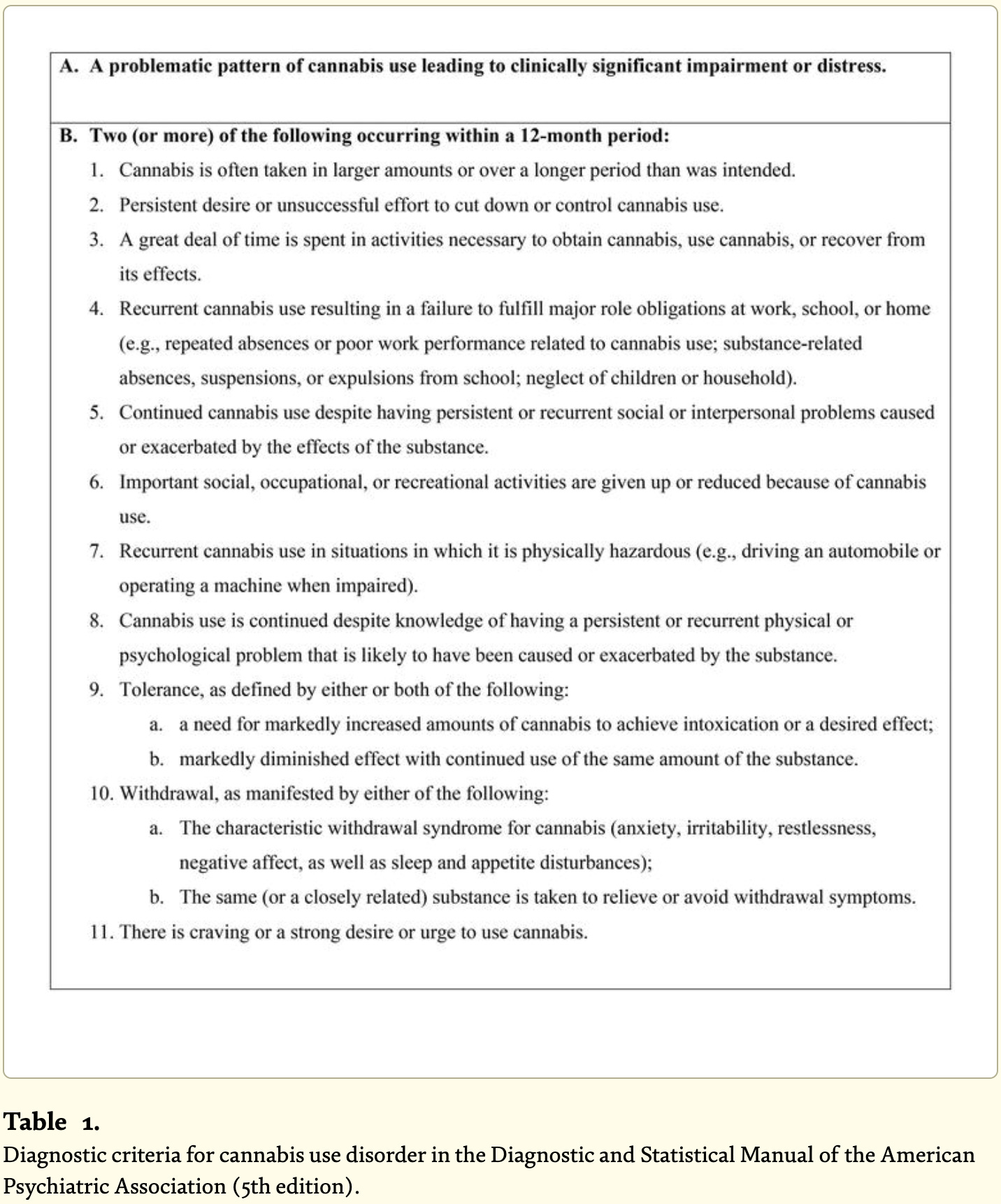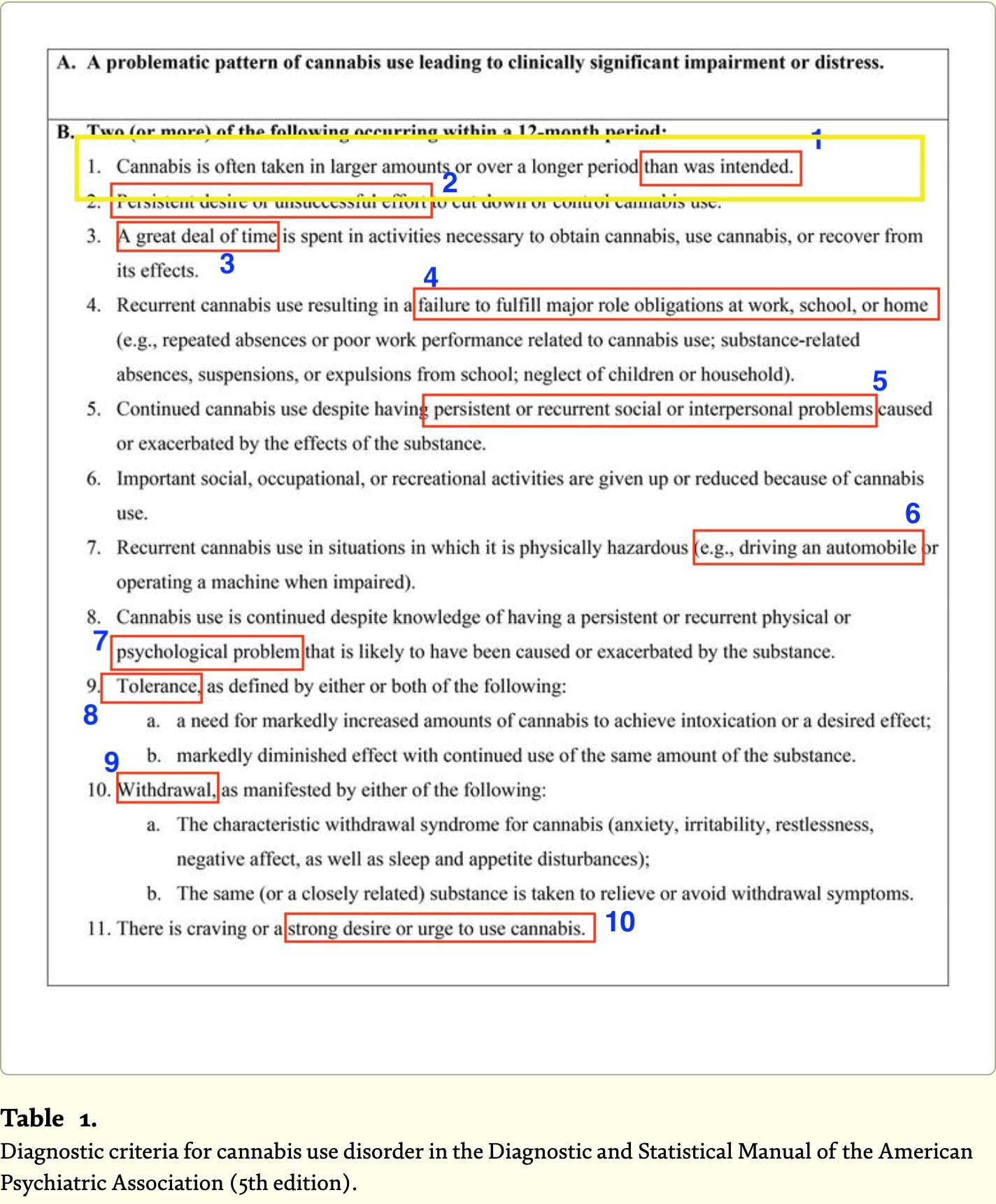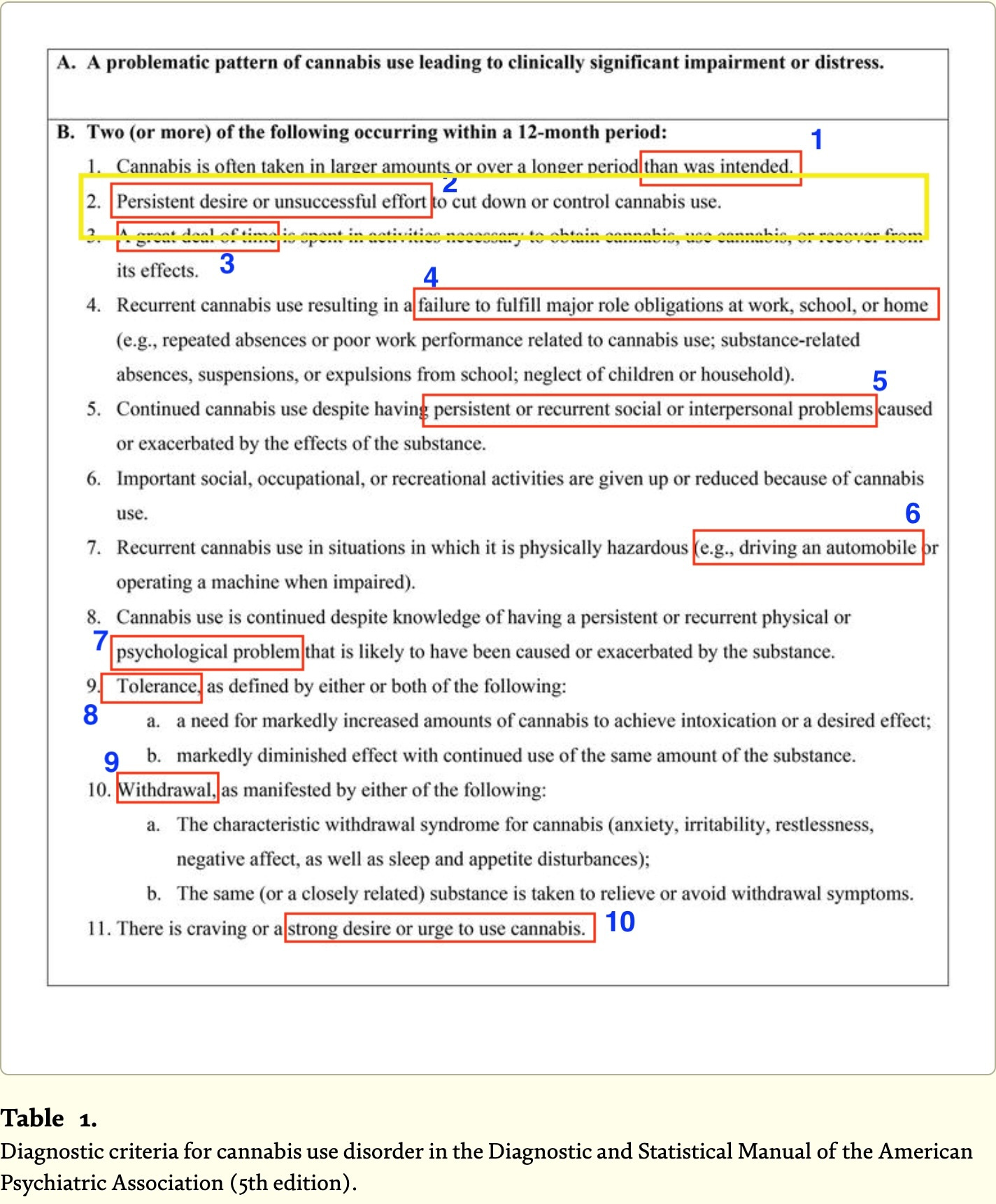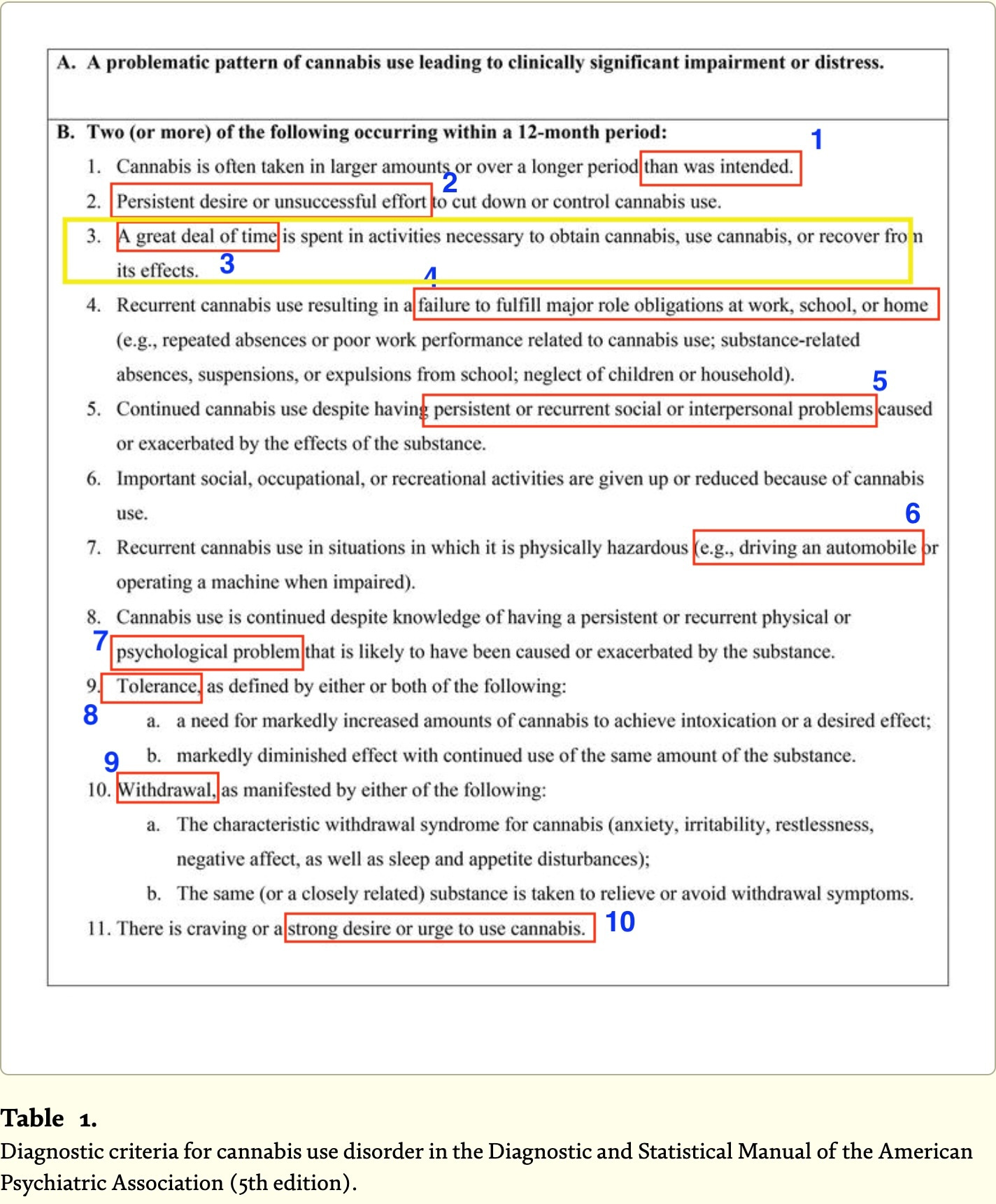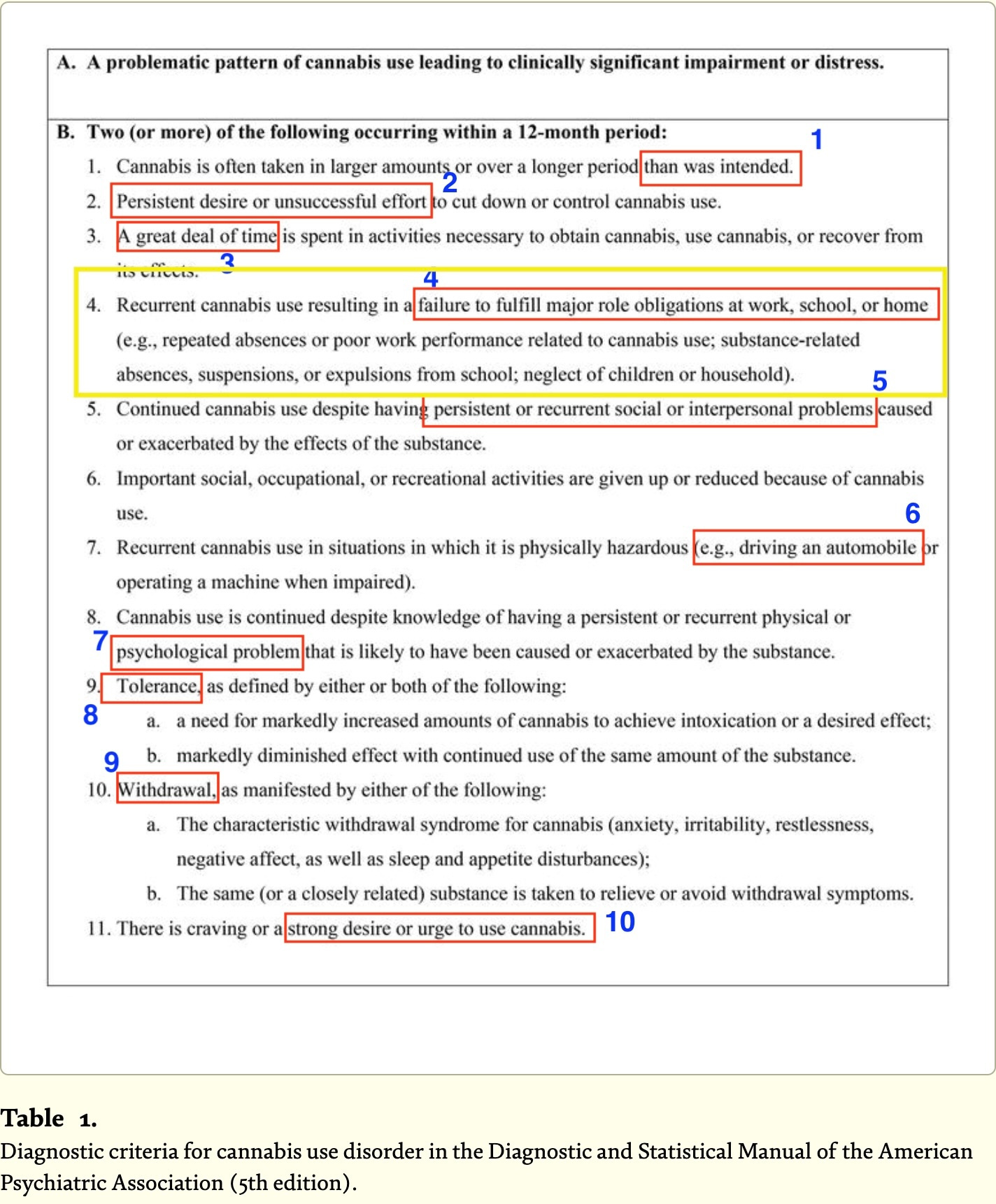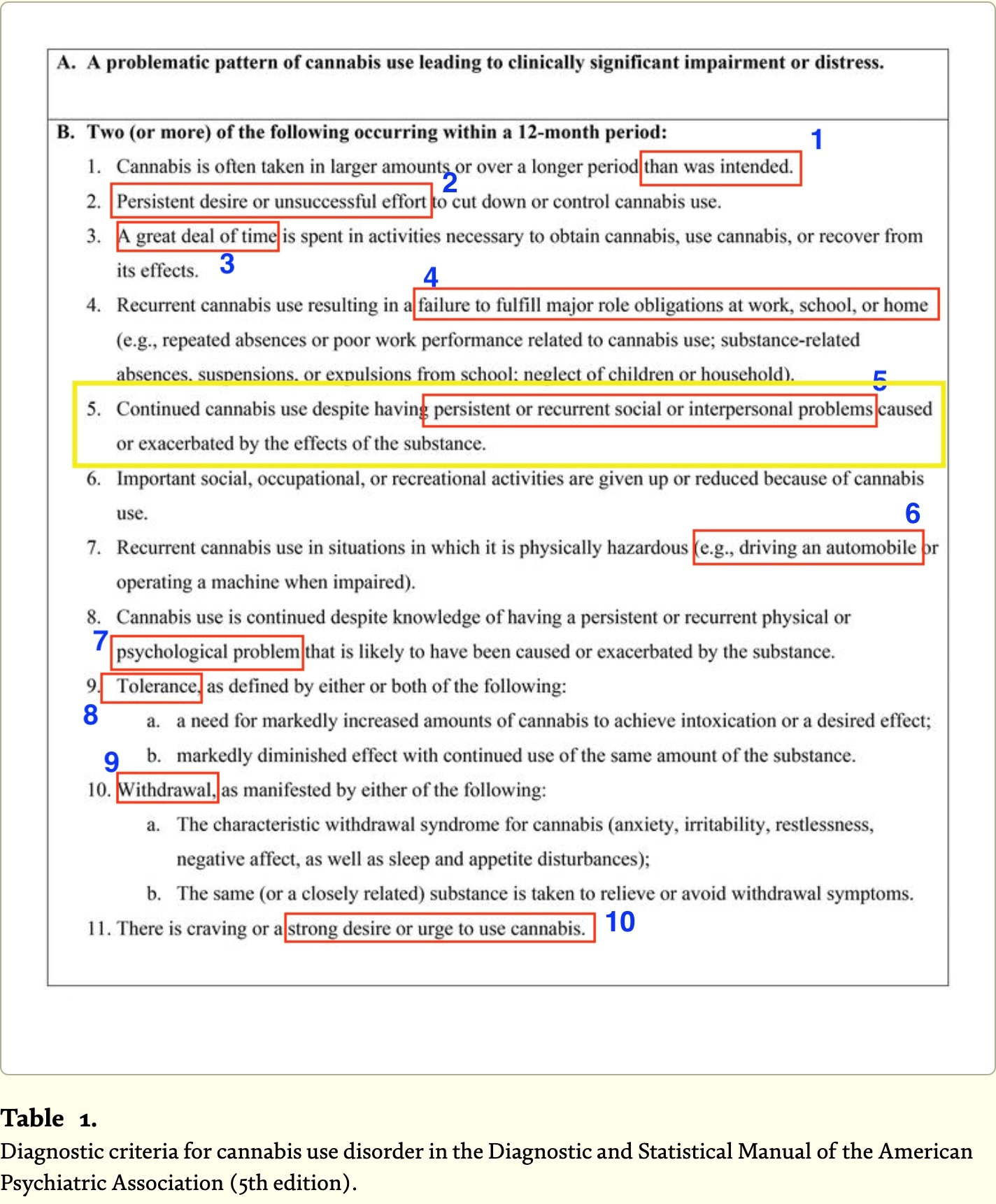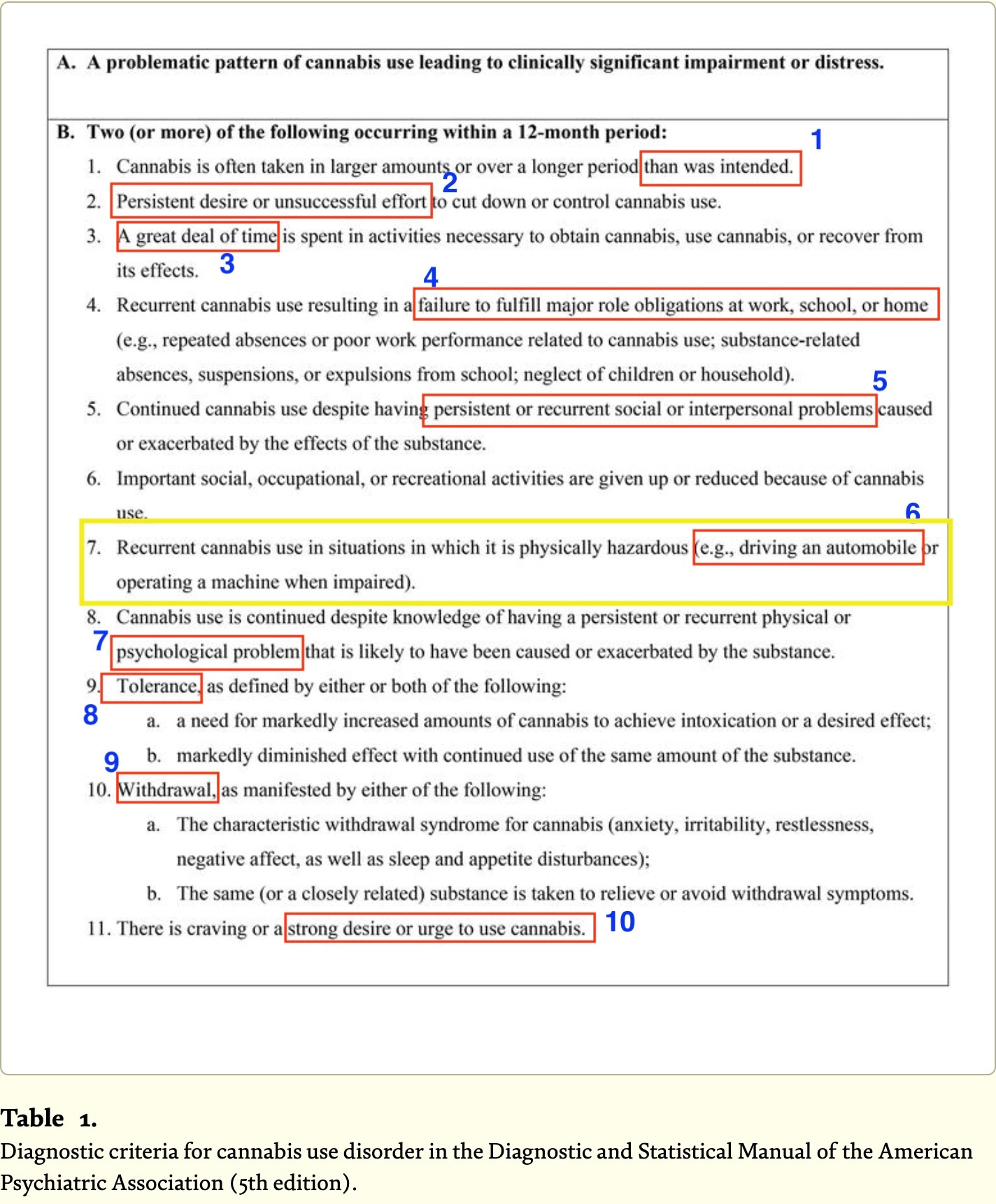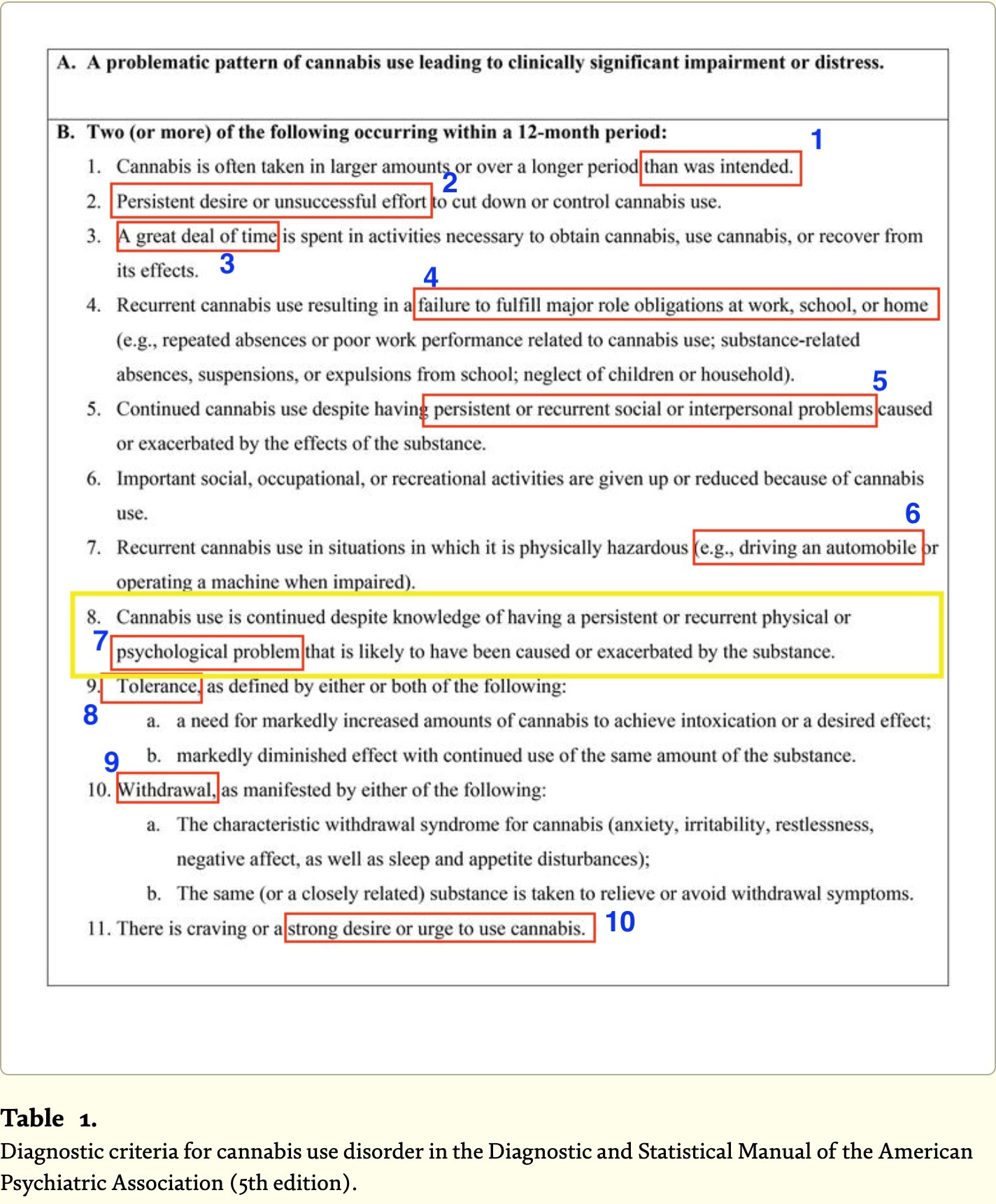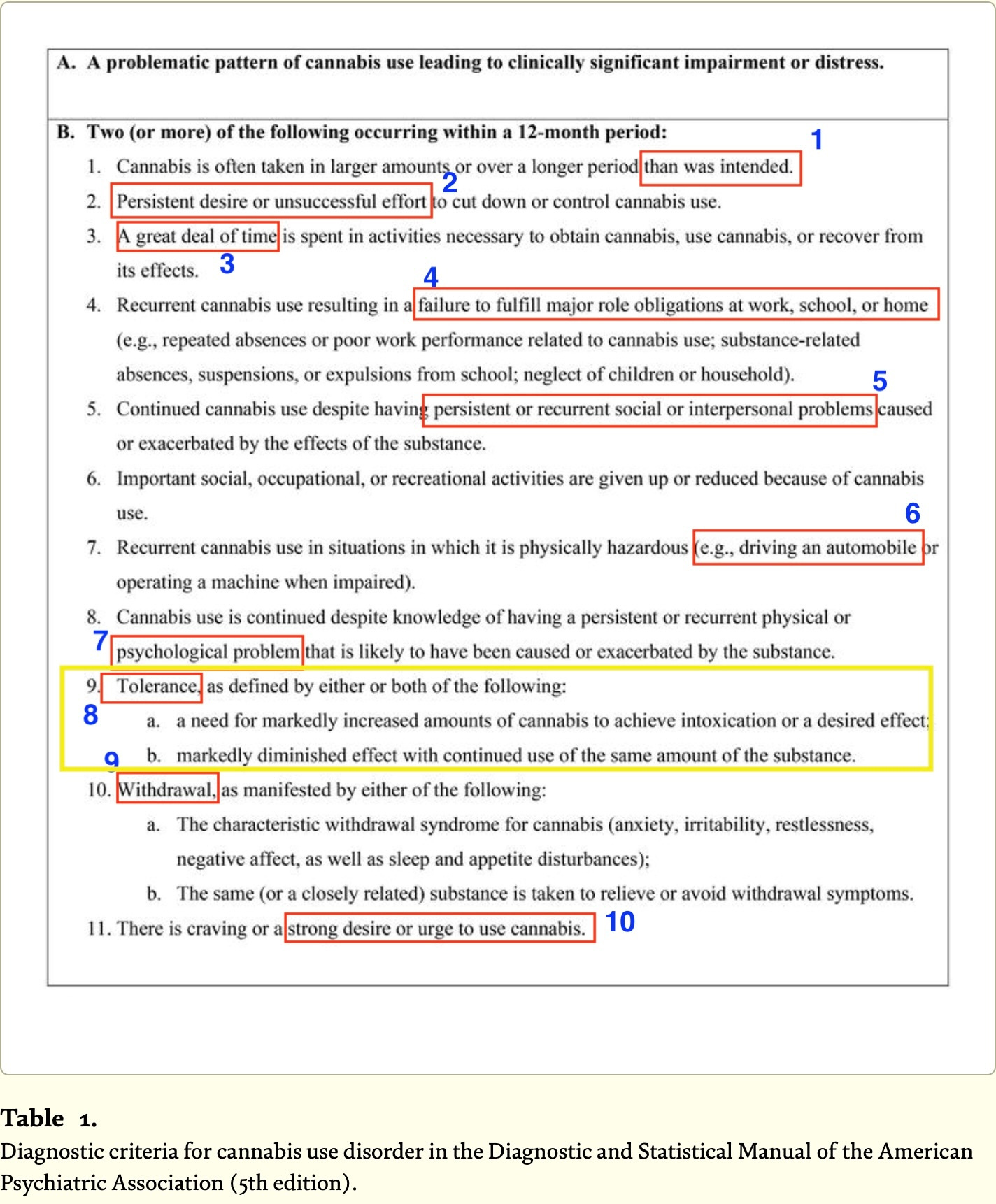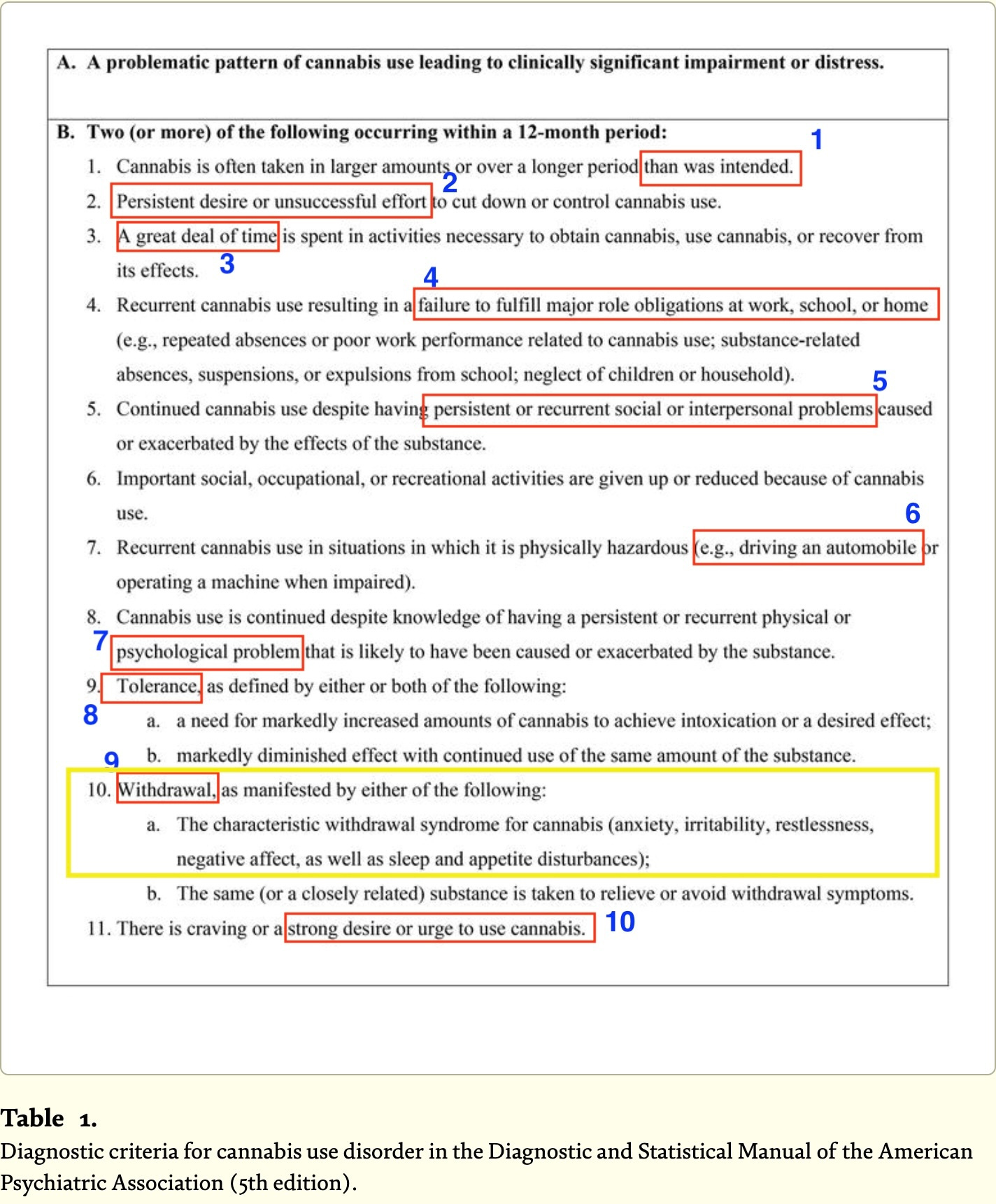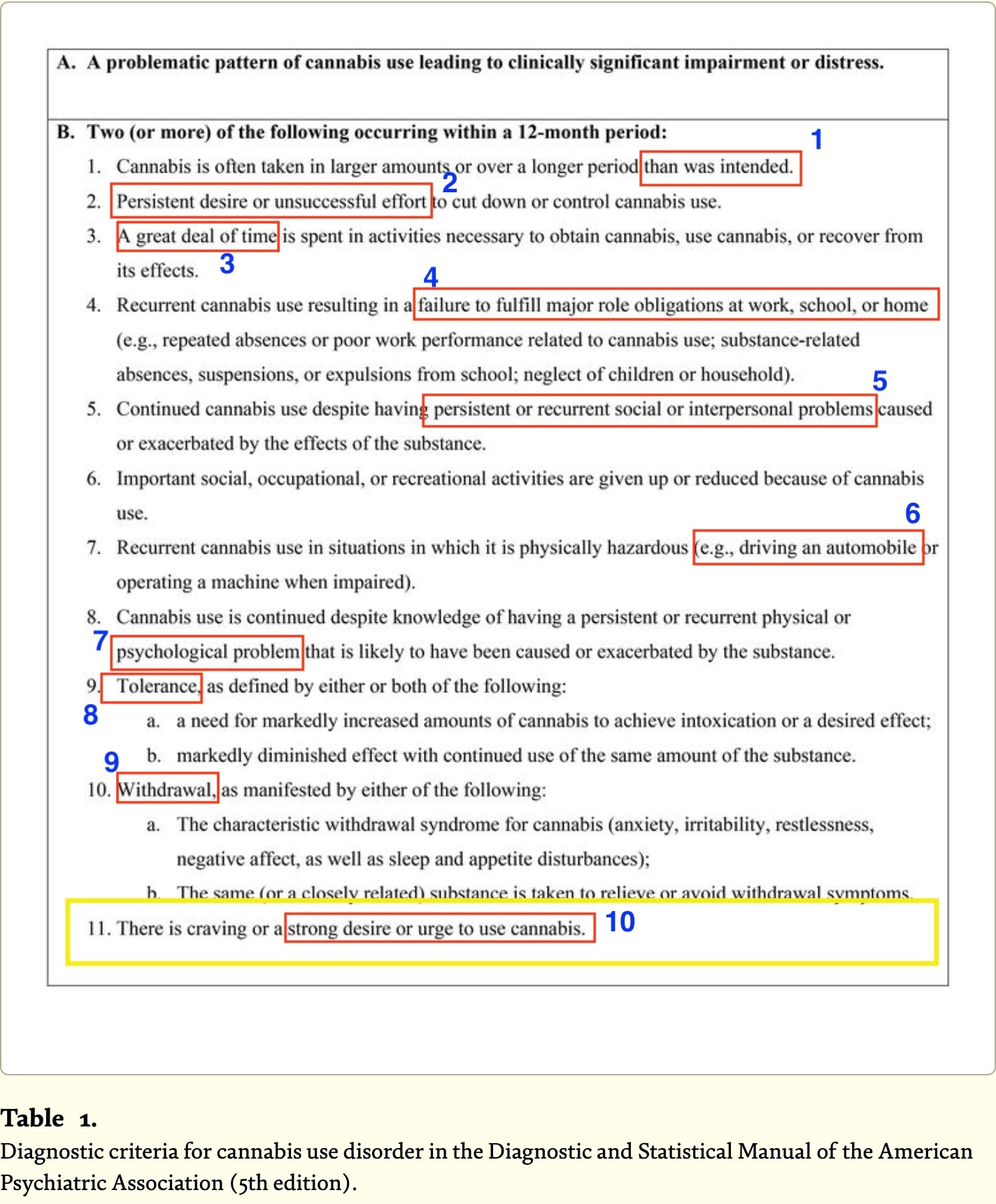Breaking the Stigma: Rethinking Cannabis Use Disorder
Why It's Time for the Medical Industry to Update Its Views on Cannabis
Rethinking Cannabis Use Disorder: A Call for Updated Criteria and Reduced Stigma
The criteria for diagnosing Cannabis Use Disorder (CUD) have long been debated, and it's time we take a closer look at whether these guidelines truly reflect problematic behavior or if they are rooted in outdated thinking and stigma. Just as we don't diagnose binge-TV watching, caffeine use, or the overuse of eyeglasses as disorders, we need to reconsider how we view cannabis use. By examining each diagnostic criterion with a fresh perspective, we can better understand the complexities of human behavior and challenge the assumptions that have clouded our collective judgment. The medical industry must evolve, recognizing the potential benefits of cannabis and updating its views accordingly.
Here are the full, existing criteria for Cannabis Use Disorder:
Larger Amounts or Longer Periods Than Intended
The criterion "Cannabis is often taken in larger amounts or over a longer period than was intended" is highly subjective and fails to consider how flexible our intentions can be. Plans change based on the situation, mood, or simply enjoying the moment—much like how we might eat more at a party than we planned without it being a problem. Occasionally using more cannabis doesn't mean there's a persistent issue, and experienced users might naturally need more due to tolerance. Plus, this guideline doesn't set clear benchmarks for what "larger amounts" or "longer periods" really mean, leading to inconsistent and potentially unfair diagnoses. Overall, this doesn't seem like a reliable way to identify problematic cannabis use.
Persistent Desire or Unsuccessful Effort to Cut Down
The criterion "Persistent desire or unsuccessful effort to cut down or control cannabis use" seems a bit harsh and doesn't quite capture the reality of human behavior. Who hasn't had a persistent desire to cut down on junk food or make an unsuccessful effort to hit the gym more often? Just because someone struggles to cut back doesn't mean they have a problem; it just means they're human. Sometimes, life gets in the way, or maybe the person just really enjoys their cannabis, much like how some of us can't resist that extra slice of pizza. This doesn't necessarily point to a disorder but rather to the normal ups and downs of trying to change a habit.
Time Spent on Cannabis-Related Activities
The guideline "A great deal of time is spent in activities necessary to obtain cannabis, use cannabis, or recover from its effects" feels a bit over the top. Let's be real—people spend a lot of time on all sorts of activities, whether it's binge-watching the latest series, scrolling through social media, or standing in line for coffee. Just because someone dedicates time to their cannabis routine doesn't automatically mean there's a problem. Maybe it's part of their relaxation ritual, like how some people unwind with a long bath or a good book. And let's not forget the time spent recovering from a Netflix marathon! This guideline seems to unfairly single out cannabis use without considering that people often invest time in their hobbies and habits.
Failure to Fulfill Major Role Obligations
The idea that "Recurrent cannabis use results in a failure to fulfill major role obligations at work, school, or home" seems a bit one-sided. There are countless reasons why someone might struggle with their responsibilities—stress, lack of sleep, or even just having a bad day. Blaming cannabis alone feels like scapegoating. It's like saying someone who binge-watches TV shows and misses a work deadline has a TV disorder. Life is complicated, and sometimes people drop the ball for various reasons. Singling out cannabis use without considering the broader context of someone's life doesn't seem entirely fair or accurate.
Social or Interpersonal Problems
The statement "Continued cannabis use despite having persistent or recurrent social or interpersonal problems caused or exacerbated by the effects of the substance" seems to miss a crucial point. Social or interpersonal problems can arise from a multitude of sources—stress, anxiety, or even just a bad week at work. Sometimes, people use cannabis to manage these very issues, like how some folks might turn to a glass of wine to unwind. Blaming cannabis for these problems could be like blaming the aspirin for the headache it's meant to cure. It's important to differentiate whether cannabis is the cause or a coping mechanism for pre-existing issues. Without this distinction, it's easy to misinterpret the situation and unfairly label the use as problematic.
Physically Hazardous Situations
The notion that "Recurrent cannabis use in situations in which it is physically hazardous (e.g., driving an automobile or operating a machine when impaired)" always signals a problem seems a bit rigid. Safety is paramount, and no one should drive or operate heavy machinery while impaired. But what if cannabis use isn't a net negative and is actually helping in other contexts? For example, some people might use cannabis to manage chronic pain or anxiety, enabling them to function better in their daily lives. It's like saying someone shouldn't take their prescribed medication because it might make them drowsy—context matters. The key is responsible use and understanding individual limits, rather than blanket statements that don't consider the potential benefits.
Physical or Psychological Problems
The statement "Cannabis use is continued despite knowledge of having a persistent or recurrent physical or psychological problem that is likely to have been caused or exacerbated by the substance" seems to overlook a crucial nuance, especially regarding psychological issues. Many people turn to cannabis to manage pre-existing psychological conditions like anxiety, depression, or PTSD. Blaming cannabis for exacerbating these issues can be like blaming the rain for getting wet when you didn't bring an umbrella. It's essential to differentiate whether cannabis is the root cause of the psychological problem or if it's being used as a coping mechanism for conditions that predate its use. Without this distinction, it's easy to misattribute the source of the issue and unfairly label the cannabis use as problematic.
Tolerance
The point about "Tolerance, as defined by either a need for markedly increased amounts of cannabis to achieve intoxication or a desired effect, or markedly diminished effect with continued use of the same amount of the substance" seems to overlook a basic principle of human biology: habituation is the rule, not the exception. Tolerance is a perfectly normal and expected response when it comes to many substances, whether it's caffeine, medications, or even spicy food. Our bodies naturally adapt to repeated exposure, requiring more to achieve the same effect. It's like how coffee drinkers need an extra cup to get the same jolt they used to get from just one. This adaptation doesn't necessarily indicate a problem; it's simply how our bodies work. Labeling tolerance as a sign of disorder ignores the fact that it's a common and natural process.
Withdrawal
The idea that "Withdrawal, as manifested by symptoms like anxiety, irritability, restlessness, negative affect, as well as sleep and appetite disturbances" indicates a disorder seems to overlook the fact that withdrawal is a normal response in many circumstances. Our bodies naturally react to the absence of substances they've grown accustomed to—whether it's caffeine, sugar, or even regular exercise. Experiencing withdrawal symptoms doesn't necessarily point to a problem; it's just how our bodies readjust. Think about how grumpy and tired people get when they skip their morning coffee. These reactions are perfectly normal and expected. Labeling withdrawal from cannabis as a sign of disorder ignores the broader context that withdrawal is a common and natural process, not an automatic indicator of a deeper issue.
Craving
The idea that "There is craving or a strong desire or urge to use cannabis" indicates a disorder seems to miss the point that craving relief isn't inherently problematic. If cannabis is effectively managing someone's symptoms—whether it's anxiety, pain, or insomnia—then it's natural to desire something that brings relief. It's like craving a painkiller when you have a headache or longing for a warm blanket on a cold day. The urge to use something that works shouldn't automatically be seen as a red flag. Instead, it highlights the effectiveness of the substance in providing comfort or relief. Labeling this desire as problematic overlooks the fact that seeking relief is a normal human response to discomfort.
The Bigger Picture: Time for Change
It's clear from examining these criteria that the current diagnostic guidelines for Cannabis Use Disorder may be rooted in outdated thinking and lingering stigma. Many of the behaviors and responses labeled as problematic are, in fact, normal human reactions to effective relief or habitual use. Just as medicine and our understanding of health must evolve, so too must our perspectives on cannabis.
Consider the recent advancements in weight loss treatments like Wegovy and Ozempic. These medications have revolutionized the way we approach obesity, allowing individuals to lose significant amounts of weight with minimal physical exertion. This shift challenges the old shorthand that obesity was solely a marker of poor cardiovascular fitness and exercise habits. In light of these new treatments, our understanding of obesity and its management has evolved, demonstrating that medical perspectives must adapt as new information becomes available.
Similarly, the medical industry needs to update its perspective on cannabis, recognizing its potential benefits and the natural responses it elicits. By doing so, we can help remove the remaining stigma that has clouded our collective judgment. This change is not just about cannabis; it's about embracing a more nuanced and informed approach to health and wellness.
It's also worth noting that we don't have diagnoses for behaviors like binge-TV watching, caffeine use, or even the overuse of eyeglasses. These are examples where dependence or excessive use might seem problematic but are not labeled as disorders. People can spend hours watching TV, rely on multiple cups of coffee to get through the day, or wear eyeglasses all the time without being considered to have a disorder. These behaviors are accepted as part of modern life and personal choice.
As we continue to learn and grow, it's crucial that our medical guidelines reflect the latest knowledge and understanding. By re-evaluating the criteria for Cannabis Use Disorder, we can create a more balanced, fair approach to understanding cannabis use, just as we have done with other evolving medical treatments. It's time to move beyond outdated stigmas and embrace a more enlightened view that acknowledges the complexities of human behavior and the evolving landscape of medical science.





